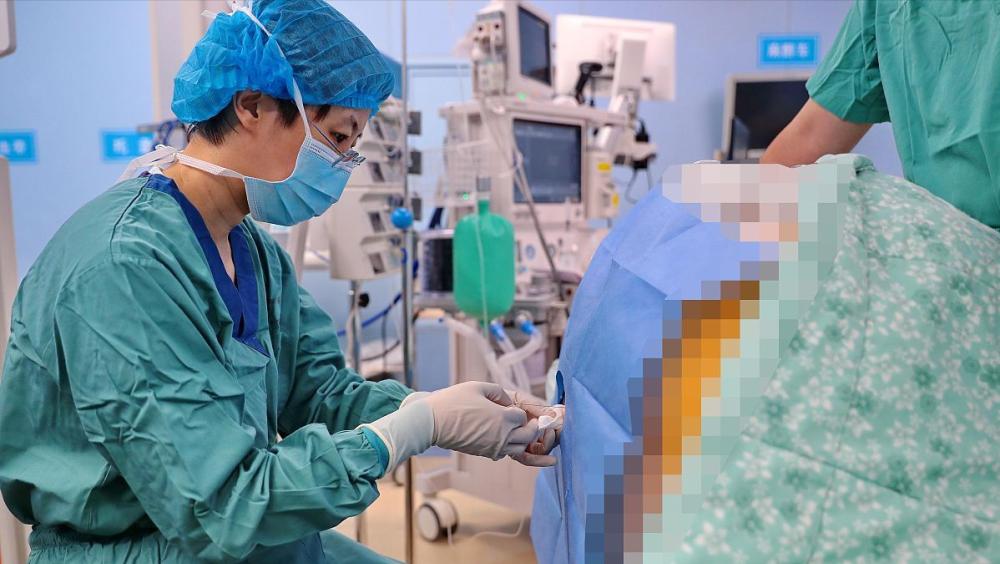This is a case from many years ago, and I hope that everyone will learn from it.
Case Description:
The patient is a male, 40 years old. Most of the gastric resection and gastroduodenal anastomosis are performed under continuous epidural anesthesia due to perforation of gastric ulcer. (Note: At that time, it was still in the era of anesthesia of "one needle to go to the world". )

Everything is ready, and the anesthesiologist performs a puncture through the T8-9 intervertebral space. However, puncture encountered difficulties. After ten minutes of hard work, the needle still could not penetrate the target. Therefore, the anesthesiologist switched to the lateral epidural puncture, which was finally successful.
Textbooks make it clear that the side entry method is suitable for elderly patients with severe calcification or difficulty puncture. Therefore, there is not much of a problem with choosing a side-entry puncture here.
After water injection and air injection without resistance, the epidural catheter is placed smoothly. After a few minutes of injecting local anesthetics through the catheter, 10 ml of local anesthetics were added after no abnormal manifestations.
After the results are good, the surgery begins. The operation lasted 3 hours, and after 6 hours of returning to the ward, the patient felt swelling, numbness, convulsions, and agitation in both lower limbs.
At that time, considering that the patient was moving due to discomfort, sedation was given.
After a few hours, the bilateral sub-groin pain disappears, the abdominal wall reflex, icotesticle reflex, and knee tendon reflexes disappear, and Babinski's sign is negative.
After 16 hours, the sensation below the T8 plane disappeared and both lower limbs were paralyzed. Ct spinal cord flat scan shows images of gas density in the spinal cord at T6-9 levels, with clear boundaries, located in the center of the spinal cord, most prominent in the thoracologic 7 plane, and the subarachnoid cavity sees a circular high-density area, and the structure of the dural capsule is not uniform.
At this point, it was confirmed that epidural puncture caused spinal cord injury.
However, due to the hospital's concern about the family's accountability at that time, no positive medical measures were taken. After 5 months, ct rechecked the accumulation of gas and bleeding and completely absorbed, but the symptoms of paralysis did not improve, and it was determined that lifelong paralysis was determined.
Regardless of who is responsible, what are the lessons learned in this case?
First, a high intraspinal puncture must be performed by a senior anesthesiologist himself. Senior anesthesiologists with many years of puncture experience can improve the success rate of intraspinal punctures and detect abnormalities in time. In anesthesia like this case, an experienced anesthesiologist may first notice that the needle has reached its goal through the layered feel of the puncture, without repeated punctures, gas injections, and "looking for negative pressure".
Second, the purpose of the epidural amount needs to be very clear. The amount of epidural experiments is mainly detected by mistakenly entering blood vessels and subarachnoid spaces. Secondary is the detection of catheters slipping into the subdural space, one side of the spinal nerve root, or intraspinal injection. Here, the focus is on intraspinal injection: intraspinal injection, patients generally have severe pain. Even, patients may make an "ah" sound due to pain. At this time, we should not blindly reprimand the patient to "not move", and ask whether there is any abnormality in time.
Again, we emphasize one detail: when puncturing, especially high epidural puncture, be sure to find an assistant to control the patient's body movements. In that state of high tension, there must be patients who cannot control their physical movements. Once there is body movement, it may affect the feel or judgment during the puncture process and lead to complications. At the same time, also say to the patient: know that you are nervous, but also try to control your body, be sure to cooperate with the doctor's operation.
Finally, we recommend that during high epidural puncture, once it encounters puncture difficulties, either give up in time or choose ultrasound visible puncture. This important position, we doctors can not afford to gamble, patients can not afford to gamble!
【Warm tips】Point to pay attention, here is a lot of professional medical science, for you to reveal the secret of surgical anesthesia those things ~ ~